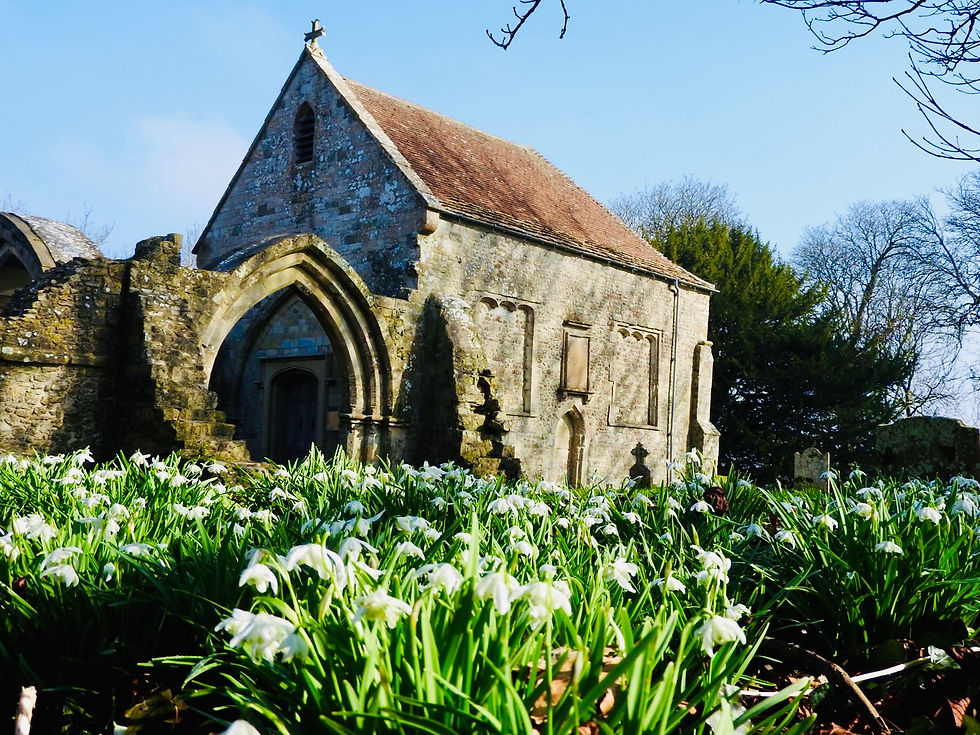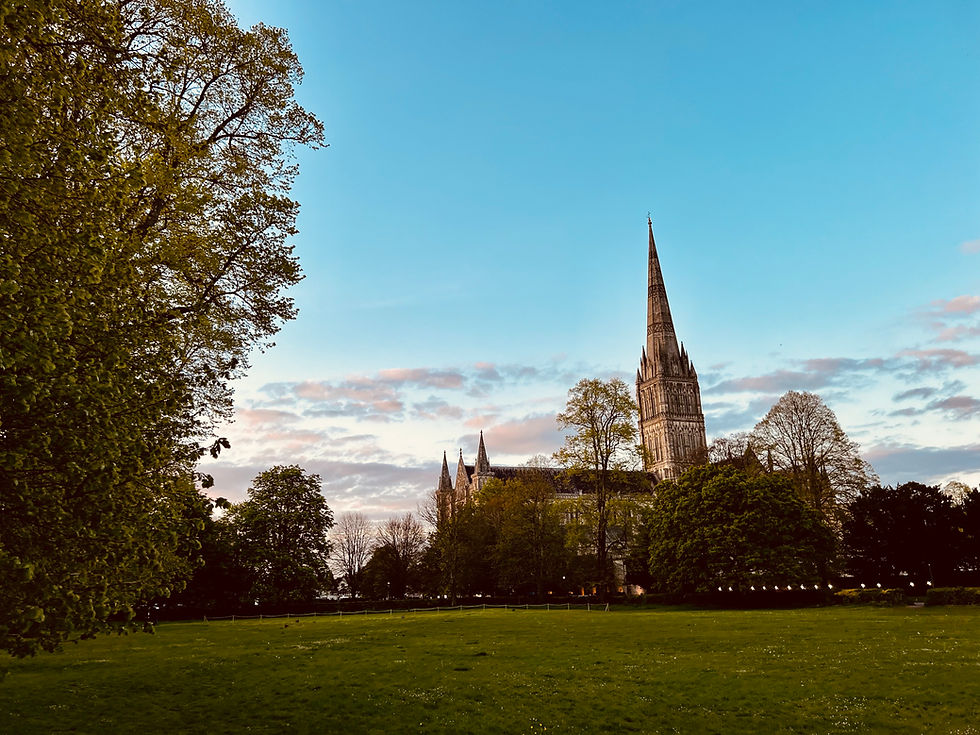Candlemas Bells
- Heather Newman

- Feb 11
- 5 min read
Updated: Feb 12
The Feast of the Presentation, which sits on the 2nd February each year, is also known as Candlemas. This was the day that Mary and Joseph presented the baby Jesus to the temple (the 40th day of the Christmas-Epiphany season) and it also happens to sit on the halfway point between the winter solstice and the beginning of Spring. It became known as Candlemas as Christians would take candles to church on that day, so that they could be blessed. These candles were then used around the home throughout the year... thats a lot of candles.
There is also a fair amount of folklore surrounding Candlemas and what the season may bring us:
"If Candlemas Day be fair and bright, winter will have another fight, if Candlemas Day bring cloud and rain, winter won't come again."
In Germany it was thought that badgers emerging from hibernation would on a sunny Candlemas Day turn round and go back to sleep as winter was going to stay a little longer... sound familiar? Although lacking the prerequisite badger this tradition made its way over to North America and spawned perhaps the most famous of these traditions (in no small part due to a 1993 film with Bill Murray); Punxsutawney Phil. Punxsutawney Phil, the Groundhog who emerges from his hole on Gobbler's Knob and if he sees his shadow returns to his burrow, predicting six more weeks of winter, or vice versa. This year he did see his shadow, so expect six more weeks of wintery conditions! Although not scientific all these traditions and beliefs have their origins in times gone by, and like so many this one seems to be eerily accurate!
Now although I have mentioned Candlemas Day the real focus of this blog is not the day itself but a little flower which takes one of its (many) names from the day, this is the Candlemas Bell or Snowdrop which is synonymous with the ending of winter and the beginning of spring. They are known as Candlemas Bells because they tend to be at their best on and around the 2nd February and so were often used to decorate the churches around that time of year. This year, however, I saw my first one on Christmas Eve!

Although perhaps best known for its beautiful summer flowers such as a variety of orchids, or stunning springtime carpets of Bluebells, one of the best times to see flowers in Wiltshire and Dorset is when the earliest bulbs start appearing and brightening our landscape. Having trained as an ecologist this is always an exciting time for me, and signifies the beginning of a long season of flora which flows in a beautiful colour spectrum, especially in the downland areas, from white to yellow, from yellow to blue and from blue to purple!
Britain has become a nation of 'Galanthophiles' in no small part due to their signifying the shifting of the seasons and the ending of a long dark winter; a symbol of hope, the beginning of better times and friendship in adversity. Snowdrops are a wonderful thing to behold often being found in 'drifts' of white especially on the edges of wooded areas - in fact seeing a single Snowdrop was once thought to foreshadow death! Today there are over 500 different varieties of Snowdrop and are found throughout Britain. However they are not a native species. Hailing from mainland Europe they were brought across (in the same way as many plants and animals) to go into the great gardens of the 1500s and 1600s. It wasn't until the late-1700s that Snowdrops were seen growing outside these gardens - a new comer that has had a great impact in a relatively short period of time.
Fun fact... during the Second World War, when the American Military Police arrived in Britain, their white hats and helmets, twinned with their olive green uniforms, earned them the nickname 'Snowdrops' with the British public. This nickname has also been used for the Royal Air Force Police who also wear white topped caps.
Snowdrops survive in cooler temperatures that other plants can't tolerate, but how can they do this? For one Snowdrops do not require pollination in the same way as other plants, instead they spread by dividing their bulbs - this goes someway to explaining why you see them in large clumps. Although they are in bloom before most pollinators put in an appearance, if it is a particularly mild day you will get pollinators such as bees out and about and Snowdrop petals have evolved a way of opening and closing based on the temperature around them, allowing pollinators into the flower. Another thing you may have noticed as you walk through drifts of Snowdrops is that on a particularly cold and crisp day it appears that the Snowdrops have wilted and are 'past their best', however, walk the same way the next day and discover that they are back to looking as perfect as ever. This is due to the fact that Snowdrops are almost unique in containing proteins that stop ice crystals forming... think of it as a form of anti-freeze! They have also developed reinforced leaf tips to allow them to break through frozen ground... an incredible little plant!

Although the bulb of the Snowdrop, in the same way as many bulbs including Daffodils and Bluebells, are poisonous, the plant was traditionally used to treat headaches and as a painkiller. In more recent times an alkaloid in the bulbs of certain Snowdrop species has been isolated and is now being used in Altzeimer and Dementia treatments.

An amazing little plant, and so beautiful to look at, but where should you go to find the best displays? In Wiltshire Hartham Park near Corsham has wonderful Snowdrops as do the National Trust properties at Lacock and Stourhead. In Dorset the villages of Affpuddle and Compton Valence are festooned with Snowdrops, as is the National Trust property at Kingston Lacey. But for those who really love Snowdrops there is only one place to visit and that is Shaftesbury the country's first 'Snowdrop Town'. Shaftesbury holds an annual Snowdrop Festival where you can enjoy thousands of Snowdrops planted in green and public space throughout the town. Back in 2012 the townspeople decided to create public trails of Snowdrops for the Diamond Jubilee of Elizabeth II, and that enthusiasm has evolved into the Snowdrop Festival held today. The Shaftesbury Snowdrop Festival is running until the 23rd February.










Comments